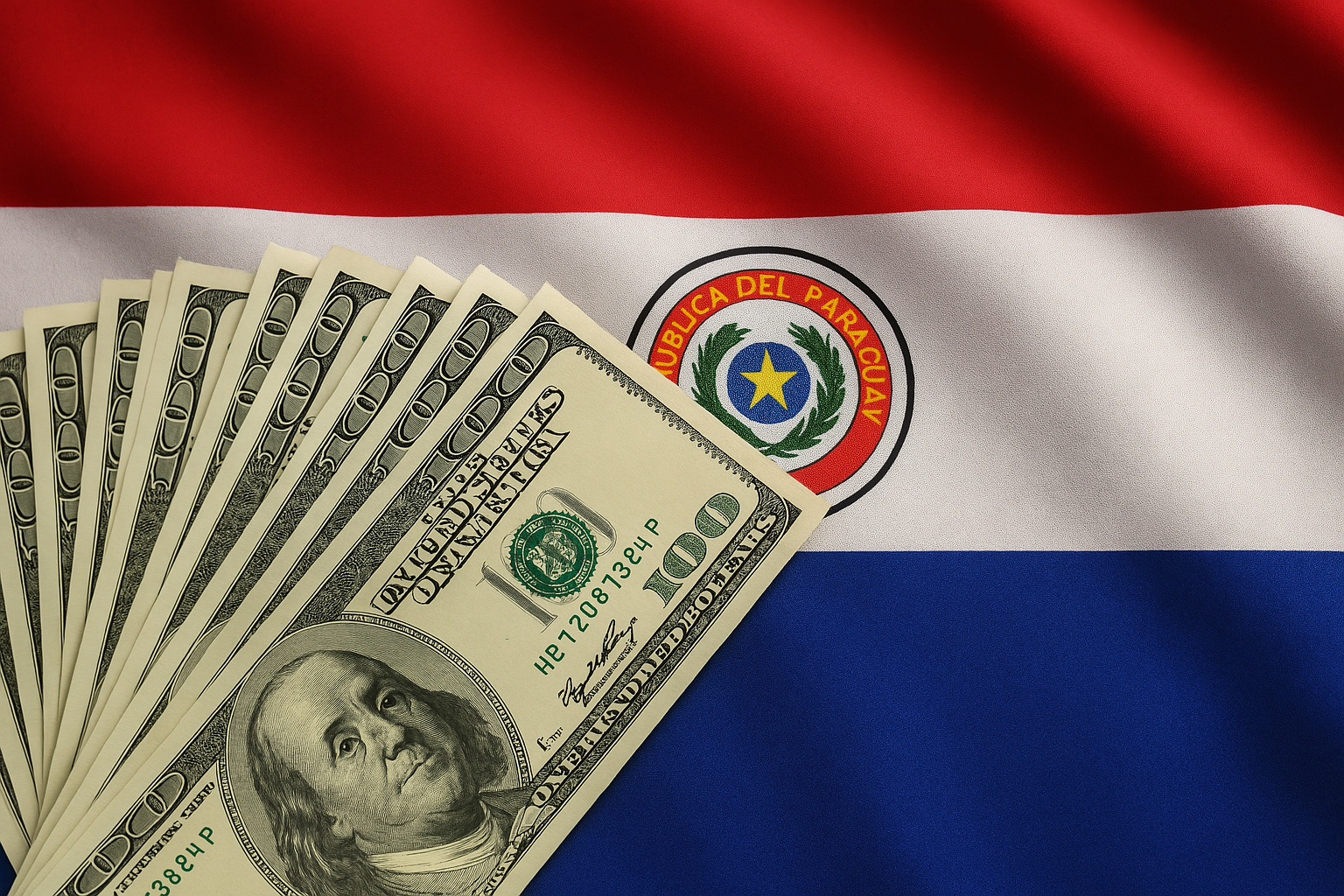Asunción, Paraguay – April 3, 2025 – The US dollar has surged past the ₲8,000 mark in Paraguay for the first time, raising concerns about currency stability and inflationary pressures despite continued interventions by the Central Bank of Paraguay (BCP).
A New Milestone: USD/Guarani Exchange Rate Breaks ₲8,000
According to data from the local currency markets, the interbank exchange rate closed at ₲8,008 on Tuesday, April 2, compared to ₲7,983 the previous day. Retail rates ranged from ₲8,000 to ₲8,020 per dollar, marking a psychological and economic milestone in the local market.
This movement represents one of the most significant depreciations of the guaraní in recent years and indicates growing structural and external pressures on Paraguay’s currency.
Why Is the Paraguayan Guaraní Weakening?
Several key factors are contributing to the current rise in the USD/₲ exchange rate:
- Sustained Demand for US Dollars:
- A seasonal increase in demand from local companies for dollar-denominated payments is driving up pressure.
- Importers and businesses seek to convert local currency into dollars to pay foreign suppliers.
- Lower Dollar Inflows:
- A decrease in dollar inflows from exports and foreign direct investment has limited liquidity.
- Reduced remittances and delays in agricultural exports are affecting supply.
- Capital Flight Speculation:
- Analysts report unconfirmed concerns regarding capital outflows to neighboring countries such as Bolivia, where currency controls and economic uncertainty may be prompting regional shifts in asset holdings.
The Central Bank’s Response
The Central Bank of Paraguay (BCP) has ramped up its interventions in an attempt to stabilize the currency:
- In recent weeks, BCP has been injecting at least $15 million daily into the foreign exchange market.
- So far in 2025, BCP has sold approximately $375 million USD through both regular and extraordinary operations.
- These actions are intended to offset speculative pressure and maintain price stability for imports, especially fuel and essential goods.
However, despite these efforts, the exchange rate continues to rise, suggesting that market forces and demand are overpowering the bank’s short-term liquidity support.
Implications for the Economy
1. Inflation Risk
A weaker guaraní may lead to higher import prices, potentially fueling inflation. This could impact the cost of fuel, electronics, machinery, and other key imported goods.
2. Business and Investment Outlook
The volatility of the currency might discourage foreign investors or increase hedging costs for international transactions.
3. Policy Outlook
If the trend continues, the Central Bank may be forced to consider additional tools, such as:
- Raising interest rates
- Revising macroeconomic targets
- Implementing longer-term monetary tightening strategies
Expert Commentary
Carlos Fernández Valdovinos, former BCP president, commented:
“The exchange rate is not only a reflection of short-term movements but of long-term confidence in the economy. Structural reforms, fiscal discipline, and transparent policies are key to stabilizing the currency.”
Conclusion
The breach of the ₲8,000 per USD level marks a pivotal moment for Paraguay’s economic landscape in 2025. While the Central Bank continues its interventions, the market response underscores the complex interplay between domestic demand, external shocks, and investor sentiment.
For businesses and investors operating in Paraguay, staying informed and implementing currency risk mitigation strategies will be critical in the months ahead.






Leave a Reply